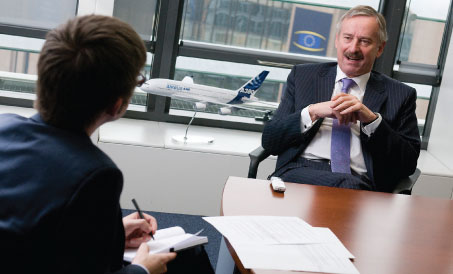
Kallas: “Europe is currently a world leader in aviation, but maintaining the status quo is simply not an option – competition is increasing, particularly from the Middle East and Asia-Pacific, and to a lesser extent Latin America.”
Immediately prior to taking over the Transport portfolio, Kallas was European Commissioner for Administrative Affairs, Audit and Anti-Fraud (2004-2010). He is also a former Prime Minister of Estonia (2002-2003), during which time he concluded negotiations for the country’s accession to the EU.
He faced his first real test as Commissioner for Transport during the Icelandic volcanic ash shock in April 2010, just two months after taking office. His reaction coupled with the response of his services in DG MOVE and industry stakeholders was vital to resolution of the unprecedented situation which occurred. Since then, he has had very regular interaction with all sides in the aviation industry, within groups such as EU Aviation Platform and the European Aviation Crisis Coordination Cell (EACCC), both of which were established since he took office.
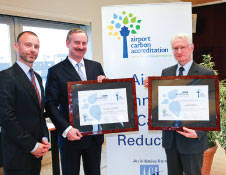
Kallas is supportive of ACI EUROPE’s programme Airport Carbon Accreditation and its “crucial role in helping to move European aviation onto a more sustainable footing”. Indeed, he has participated in the certification ceremonies for Paris-Charles de Gaulle, Paris-Orly, Brussels and Budapest airports.
The effectiveness of the European Aviation Crisis Coordination Cell (EACCC) was evident, in response to the eruption of the Grimsvötn volcano in May of this year. The EACCC includes senior representatives from the European Commission, EUROCONTROL, the European Aviation Safety Agency (EASA), Member States, aviation industry stakeholders such as ACI EUROPE and unions. The coordinated response and collaborative decision-making ensured the negative impact of the Grimsvötn eruption was significantly less than that during the first Icelandic volcanic ash crisis in April 2010. “In the first volcanic eruption – Eyjafjallajökull – there were 100,000 flights cancelled and in the second – Grimsvötn – 8,000 flights cancelled,” said Kallas. “While it was a smaller eruption with different characteristics, we also changed the system of cooperation between Member States, different air traffic authorities and aviation industry stakeholders, and the estimation is that if we had the same system in place during the Eyjafjallajökull eruption, 30,000 flights would have been cancelled rather than 100,000. The cooperation between these organisations has resulted in a tremendous improvement.”
Warming to the discussion, Kallas commented “Europe is currently a world leader in aviation, but maintaining the status quo is simply not an option – competition is increasing, particularly from the Middle East and Asia-Pacific, and to a lesser extent Latin America. To confront this, we urgently need to make the system more efficient and more competitive,” said Kallas. “In relation specifically to airports, the major issue is the ‘capacity crunch’ – the growing gap between capacity and demand at a number of busy EU hubs. Congestion at these airports will remain a concern. Even though forecasting traffic is an uncertain science, traffic will continue to grow in the future, as it did over the last 50 years despite periods of economic downturn and other disruptions. Air traffic in Europe, in particular, will grow slower than in emerging economies, but it will nearly double by 2030. However, Europe’s airports will not have the capacity to meet a large part of this demand.”
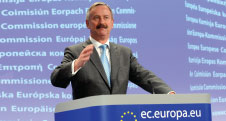
Kallas: “The European Commission is committed to the 2013 deadline for the full lifting of the liquids ban at EU airports. In order to make sure that appropriate and concrete steps are taken the Commission has set up a group of security experts (2013-LWG) consisting of Member States and the aviation industry.”
Vice President Kallas repeatedly stated during the interview that he views “capacity” and “quality” as the two key challenges facing Europe’s airports. On the one hand, he sees the network, while on the other, he mentions his own experience as a passenger as well. Proposals for an ‘Airport Package’ are due to be released by the European Commission in early December, bringing together revised EU legislation concerning airport slots, airport capacity, ground handling and noise restrictions.
Early this year, Vice-President Kallas launched the White Paper – ‘Roadmap for the Future of Transport 2050’, with the aim of providing a comprehensive strategy for a competitive transport system, and of creating a Single European Transport Area. The White Paper recognises that “curbing mobility is not an option” and that “infrastructure shapes mobility”. With air traffic set to double by 2030, ACI EUROPE has long argued that Europe’s airports are doing all they can to earn their licence to grow, but need to be empowered for genuine progress to occur on airport capacity. The airport capacity crunch is also a direct threat to the success of the Single European Sky – as ACI EUROPE regularly states “tripling capacity in the sky will be futile without matching capacity on the ground”. Moreover, with the projected growth in Europe’s dependence on trade with the new economic powerhouses of Asia and Latin America, ACI EUROPE proposes that airport capacity should also be addressed at European level, from a network perspective and as part of the ‘competitiveness agenda’.
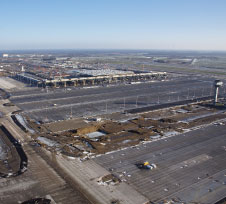
Kallas: “In relation specifically to airports, the major issue is the ‘capacity crunch’ – the growing gap between capacity and demand at a number of busy EU hubs.”
EUROCONTROL’s Long-Term Forecast indicates that there will be 16.9 million IFR (Instrument Flight Rules) movements in 2030 – 1.8 times more than in 2009 – while airport capacity is expected to increase by around 40%.
“We must facilitate the rational growth of aviation. We have an estimate that by 2030, even with a 40% increase in airport capacity, at least 10% (around two million flights) of demand for airport transport will not be met. So, a priority is to reduce the obstacles to the smooth functioning of air transport,” explained Kallas.
Single European Sky
Naturally, the Single European Sky programme is a hot topic in this regard, as it is the centrepiece of aviation policy at EU level right now. Airports have a vital role to play in the project, as ground coordinators. Accelerated implementation of the Single European Sky is essential to improving the framework for a competitive and sustainable air transport system in Europe, but Europe’s air transport system will not maintain its leading position without the necessary infrastructure.
“Our major priority for aviation is to develop the Single European Sky, which means a fundamental change in Airport Traffic Management (ATM) – new technology and a new structure for ATM in Europe,” explained Kallas. “In aviation, our actions must be directed towards increasing punctuality and improving reliability. Secondly, investment into the airports and necessary supporting services is also important.”
The SESAR (Single European Sky ATM Research) programme represents the technological dimension of the drive towards a Single European Sky. It will eliminate the fragmented approach to Air Traffic Management, transforming the ATM system and synchronising all stakeholders. At the ACI EUROPE Annual Assembly, held in Lisbon in June, the SESAR Joint Undertaking signed a cooperation agreement with ACI EUROPE to engage its technical expertise in the programme.
“SESAR is, of course, very important. The Development phase will be complete in 2013 and next we will move to the Deployment phase, which will require an investment of some €30 billion. I would like to underline that we have signed an agreement with the US to ensure that we will have interoperable systems with their own NEXTGEN project,” commented Kallas. “As SESAR moves towards Deployment, it should triple capacity in the air and raise safety by a factor of 10. It will also reduce carbon emissions by 10% for each flight and cut air traffic management costs by 50%.”
Another central element of the Single European Sky is reducing the current 67 portions of European airspace into nine Functional Airspace Blocks (FABs) by December 2012. According to EUROCONTROL, delays in Europe attributable to ATM account for 1,000 hours each day and are partly attributable to airspace fragmentation. Within a FAB, air traffic flows and air navigation services are integrated and managed according to operational needs rather than national boundaries, resulting in more efficient use of airspace and significant capacity gains. “Governments decided to reform the existing system via performance target schemes.
Of course, we are urging governments to be ambitious enough to ensure that the 2012 Functional Airspace Blocks can really happen,” said Kallas.
TEN-T
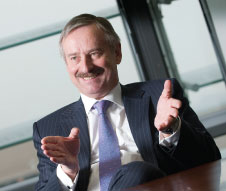
Kallas explained that there are 82 airports on the new TEN-T core network, and there is an obligation for 37 of those to be connected to rail. “The numbers speak for themselves. They send a very clear signal about the high political importance given to airports in the future European transport infrastructure.”
Returning to the Transport 2050 theme of ‘infrastructure shapes mobility’, in October, the European Commission adopted a proposal to transform the existing patchwork of national networks into a new Trans-European Transport Network (TEN-T) (see article on p30). The ambitious policy follows a major two-year consultation involving Member States, regions and stakeholders, and establishes a core transport network to be established by 2030.
Kallas advocates improved co-modality. “There are 82 airports on the new Core European Transport Network (TEN-T core network) published last month. There is a requirement for 37 of those airports to be connected to rail (national rail network),” he explained. “The numbers speak for themselves. They send a very clear signal about the high political importance given to airports in the future European transport infrastructure.”
Aviation liberalisation
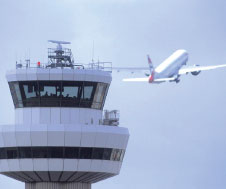
Kallas: “Our major priority for aviation is to develop the Single European Sky, which means a fundamental change in Airport Traffic Management (ATM) – new technology and a new structure for ATM in Europe.”
ACI EUROPE released a special publication – ‘Expanding Europe’s Aviation Market – Prerequisite for Global Relevance’ – at its Annual Assembly in June. It calls for an acceleration of aviation liberalisation led at EU level. The impact of the Single European aviation market created in the 1990s has been phenomenal; figures from the ACI EUROPE publication show that it contributes more than €120 billion to Europe’s economy and three million jobs. Meanwhile, the Transport 2050 White Paper indicates that the aim, by 2020, is to complete the extended European Common Aviation Area of 58 countries and one billion inhabitants, which would create a truly integrated aviation market covering the EU and its closest regions.
“Aviation liberalisation has hugely benefited EU citizens in terms of lower prices and more choice of routes. We need to accelerate this work. We are working to expand the European aviation area to cover potentially one billion people and then even further than that,” said Kallas. “The first priority is, of course, to expand towards our closest neighbours, including the Mediterranean and Eastern Partnership countries. Then we need to expand our Common Aviation Area to the BRIC (Brazil, Russia, India, China) and ASEAN (Association of South East Asian Nations) markets, like Singapore, and beyond. Our level of ambition must be very high, but to negotiate aviation agreements we need a mandate from Member States, and some Member States can be far too reluctant to give that, wrongly suspecting that they would be better negotiating alone. That is not sustainable.”
An EU-Russia Aviation Summit, jointly organised by the European Commission and the Russian Ministry of Transport, took place in St Petersburg in October, with the aim of enhancing political, technical and industrial cooperation in the aviation sector between Russia and the EU (see article on p22). ACI EUROPE has called for a single aviation agreement liberalising air traffic to replace bilateral agreements between Russia and EU Member States. “The EU-Russia Aviation Summit was a success and we very much appreciated the participation and support of ACI EUROPE. As to future EU-Russian relations in aviation, I hope that we can deepen further our cooperation, but it takes two to tango,” commented Kallas.
Airline ticketing transparency
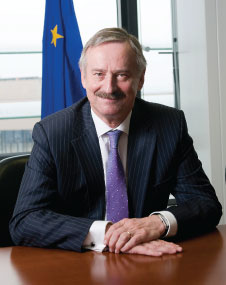
Kallas views “capacity” and “quality” as the two key challenges facing Europe’s airports and proposals for an Airport Package will be brought forward before the end of 2011, covering key issues including airport slots, ground handling and noise restrictions.
With the EU Directive on Airport Charges now well and truly in place, there is increasing consumer pressure for more transparency of airline ticket pricing. This includes the way some airlines are listing airport charges as higher than they actually are, or security and fuel surcharges misleadingly presented. On this matter, Kallas said “My intention would be to increase the transparency in ticket pricing. My services are currently looking at ways how to make that happen.”
Aviation security
On the subject of aviation security and how it has cast a shadow on the passenger experience of air travel, Kallas emphasised that global cooperation is vital and that the priority is to reduce the time passengers spend negotiating the security process. “To improve the technology for security checks, we have just agreed the security scanners concept, at European level,” he said. The European Parliament voted in favour of a European Commission proposal to include security scanners on the list of equipment approved for passenger screening.
Meanwhile, the Phase 1 lifting of restrictions on Liquids, Aerosols and Gels (LAGs) was scheduled to take place on 29 April 2011. However, the lack of agreement with the US, which informed the European Commission that it would impose extra screening requirements on flights bound for the US, and lack of uniform implementation across Europe, resulted in the adoption of new legislation removing this interim phase completely. All efforts are now being put into the complete removal of LAGs restrictions in 2013. ACI EUROPE is a key member of the European Commission 2013 Liquids Working Group (2013-LWG) that has been formed to study the implications for the removal of the ban in 2013 (see article on p27).
Kallas commented “The European Commission is committed to the 2013 deadline for the full lifting of the liquids ban at EU airports. In order to make sure that appropriate and concrete steps are taken the Commission has set up a group of security experts (2013-LWG) consisting of Member States and the aviation industry. The 2013-LWG will facilitate organising of operational trials and the drafting of information material for the travelling public, as well as the coordination with international partners. I’m happy that ACI EUROPE is actively participating in this work.”
‘Constructive cooperation’
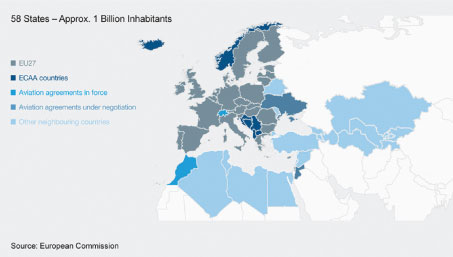
Kallas: “Aviation liberalisation has hugely benefited EU citizens in terms of lower prices and more choice of routes. We need to accelerate this work. We are working to expand the European aviation area to cover potentially one billion people and then even further than that.”
In Kallas’ own words, “cooperation with ACI EUROPE is very constructive”. “During my time in office, I have had the pleasure of meeting with the previous ACI EUROPE President, Ad Rutten, and the current ACI EUROPE President, Declan Collier. My staff are in close contact with the Director General, Olivier Jankovec, and other members of the ACI EUROPE staff.”
Kallas is particularly enthusiastic about ACI EUROPE’s flagship climate change initiative Airport Carbon Accreditation and its “crucial role in helping to move European aviation onto a more sustainable footing”. Indeed, he has given his personal support to the programme, participating in the certification ceremonies of Brussels Airport, Budapest Airport and Paris-Charles de Gaulle and Paris-Orly airports. “Airport Carbon Accreditation is a wonderful idea. I highly appreciate this initiative of Europe’s airports. It is important that such initiatives come from industry stakeholders,” he commented.
Kallas recognises that air transport plays in an irreplaceable role in maintaining Europe’s competitiveness, and its function as a primary enabler of jobs and growth. He also acknowledges the importance of addressing the capacity challenge, both in the air and on the ground, and that, with increasing competition from the Middle East, Asia-Pacific and Latin America, maintaining the status quo is not an option. The forthcoming Airport Package is, therefore, awaited with great interest. “The Airport Package is one important part of the overall aviation strategy and we really want to focus on measures that increase the capacity of airports. We have close contact with Europe’s airports and they will, of course, be consulted on the Package,” concluded Kallas.







